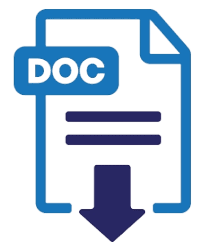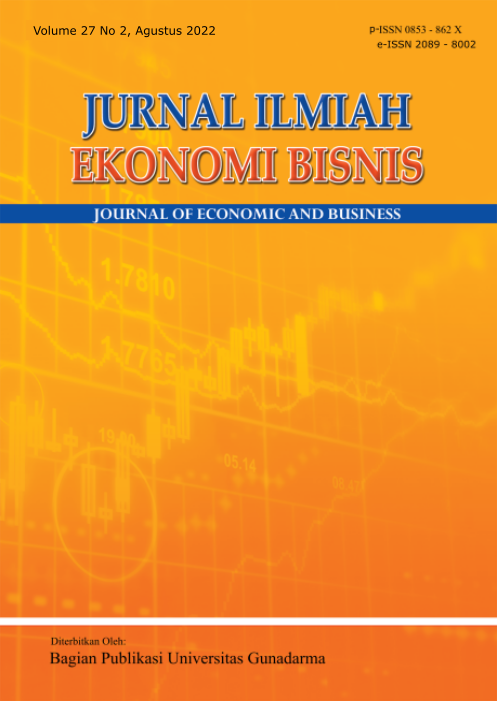THE DEVELOPMENT OF COASTAL AREA AND HUMAN RESOURCE IN BENGKULU PROVINCE
Universitas Dehasen Bengkulu
Indonesia
Abstract
This study aims to identify and formulate the potential strategies for developing coastal areas and fisherman human resource strategies in Bengkulu Province - Indonesia. This research was conducted using the sample taken from 18 institutions (i.e., policymakers) and 400 fishermen were randomly selected to participate in the survey. The suggested strategy could be conducted by optimizing the available strengths and opportunities to overcome the existing weaknesses and threats. In particular, it could be done by optimally utilizing the coastal and marine resources to fulfill the broad market share of domestic fisheries products, enforcing the existing laws and regulations, and increasing the level of fish consumption. More specifically, the strategy in regard to fishermen skills development could be choosen to support fisheries production. Thus, leading to the improvement of fishing infrastructure, and the fishermen skills through the utilization of capital assistance from the government’s program.
Keywords
References
Aheto, D.W., Asare, N.K., Quaynor, B., Tenkorang, E.Y., Asare, C., & Okyere, I. (2012). Profitability of small-scale fisheries in Elmina, Ghana. Sustainability, 4(12), 2785-2794. doi:10.3390/su4112785.
Ali, J., & Abdullah, H. 2010). Impact of enforcement and co-management on compliance behavior of fishermen. International Journal of Economics and Finance, 2(4), 113-121. doi: 10.5539/ijef.v2n4p113.
Alison, E. H., & Ellis, F. (2001) The livelihoods approach and management of small-scale fisheries. Pergamon Marine Policy, 25(5), 377–388. doi:10.1016/S0308-597X(01)00023-9.
Anas, P., (2014). Membongkar akar kemiskinan nelayan. Jakarta: Pusat Penyuluhan Kelautan Perikanan.
Andrew, N. L., Bene, C., Hall, S.J., Allison, E. H., & Heck, S., & Ratner, B. D. (2015). Diagnosis and management of small‐scale fisheries in developing countries. Fish and Fisheries, 8(3), 227-240. doi: 10.1111 / j.1467-2679.2007.00252.x
Basurto, X., Bennett, A., Weaver, A. H., Van-Dyck, S. R., & Bueno, J. S. A. (2013). Cooperative and noncooperative strategies for small-scale fisheries self-governance in the globalization era: Implications for conservation. Ecology and Society, 18(4), 1-19.
Bene, C., & Friend, R. M. (2011). Poverty in small-scale fisheries: Old issue, new analysis. Progress in Development Studies, 11(2), 119-144.
Bussolo, M. & Round, J. I. (2003). Poverty reduction strategies in a budget-constraint economy: the case of Ghana. OECD Development Centre, Working Paper No. 220, 1-46.
Darajati, W. (2004). Strategi pengelolaan wilayah pesisir dan lautan secara terpadu dan berkelanjutan. Makalah Sosialisasi Nasional MFCDP, Direktur Kelautan dan Perikanan, BAPPENAS.
David, F. R. (2013). Strategic management concepts and cases. England: Pearson Educated Limited.
Dessler, G. (2008). Human resource management (Fourth edition). New Jersey: Prentice Hall Internasional.
Edvardsson, I., Tingley, D., Asmundsson, J., Conides, A., Drakeford, B., & Holm, D.(2011). Fisheries management systems and risk perception amongst Fishermen in Iceland, Faroe Islands, and UK. International Journal of Humanities and Social Science, 1(4), 31-41.
Hidayati, R. A., & Sholichah, M. (2011). Fishermen alleviation poverty model in the North Coastal East Java. Jurnal Ekonomi Pembangunan, 2(2), 147-162.
Hoagland, P., Kite-Powel, H.L., Jin, D., Solow, A. R. (2013). Supply –side approaches to the economic valuation of coastal and marine habitat in the Red Sea. Journal of King Saud University-Science, 25(3), 217-278.
Jentoft, S., Onyango, P., & Islam, M.M. (2010). Freedom and poverty in the fishery commons. International Journal of the Commons, 4(1), 345–366.
Javier, G.S., (2015). Integrated coastal zone management: A public policy. The need for communication, coordination and participation. Journal of Coastal Zone Management, 18(4), 1-2.
Kishor, N. R. (2014). Empowerment of fishermen through microcredit. International Journal of Business Management and Allied Sciences (IJBMAS), 1(1), 11-23.
Marwansyah (2014). Manajemen sumber daya manusia, (Edisi 2). Bandung: CV. Alfabeta.
Ministry of Maritime Affairs and Fisheries. (2014). Annual Report. Ministry of Maritime Affairs and Fisheries Report.
Mostafaeipour, A., Mortazavi, M., & Sadra-Abarghouei, N. (2011). Implementation of Value Engineering for strategy formulation (Case study: Fisheries sector). Iranian Journal of Fisheries Sciences 10 (4) 689-707
Mondy, R. W. & Mondy, J. B. (2013). Human resource management (13th Edition). United Kingdom: Prentice Hall.
Nabi, M. R., Hoque, M. A., Rahman, R. A., Mustafa, S., & Kader, M. A. (2011). Poverty profiling of the estuarine set bag net fishermen community in Bangladesh. Research in World Economy, 2(2), 1-19.
Sutrisno, E. (2013). Manajemen sumber daya manusia. Jakarta: Kencana Prenada Media Group.
Olomola, A. S. (1993). The traditional approach towards sustainable management of common property fishery resources in Nigeria. MAST Journal, 6(1/2), 92-109.
Polite, D. (2013). Traditional fishing rights: analysis of state practice. Australian Journal of Maritime and Ocean Affairs, 5(3), 120-128.
Pomeroy, R.S. (1995). Community-based and co-management institutions forsustainable coastal fisheries management in Southeast Asia. Ocean & Coastal Management 27(3), 143-162.
Rivera, A., Gelcich, S., Garcia-Florez, L., Alcazar, J.L., & Acuna, J. L. (2014). Co management in Europe: Insights from the gooseneck barnacle fishery in Asturias, Spain. Marine Policy, 50 (December 2014), 300-308.
Raemaekers, S. J.P.N., Foggin, T., Shipton, T.A., Daley, E. A., Busson, F., & Maasdorp, G. (2010). Coastal Livelihoods in the Republic of South Africa. Agulhas and Somali Current Large Marine Ecosystems (ASCLME), South Africa.
Rangkuti, F. (2014). Analisis SWOT: Teknik membedah kasus bisnis. Jakarta: PT.Gramedia Pustaka.
Robbins, S.P. & Judge, T. A. (2009). Organization behavior (13th Edition). London: Pearson Education.
Schernewski, G., Schonwald, S. & Katarzyte, M. (2014). Application and evaluation of an indicator set to measure and promote sustainable development in coastal areas. Ocean & Coastal Management, 101(November 2014), 2–13.
Siar, S.V. (2003). Knowledge, gender, and resources in small-scale fishing: The case of Honda Bay, Palawan, Philippines. Environmental Management, 31(5), 569-580.
Sobo, F., Masekese, I. A., Shipton, T. A., Daley, E. A., Busson, F., & Maasdorp, G. (2010). Costal Livelihood in the United Republic of Tanzania. Agulhas and Somali Current Large Marine Ecosystem (ASCLME) project: Tanzania. Retrieved from: https://www.nairobiconvention.org/clearinghouse/node/481.
Sumarsono, S.(2006). Ekonomi manajemen sumber daya manusia dan ketenagakerjaan. Yogyakarta: Graha Ilmu.
Supriharyono, (2007). Pelestarian dan pengelolaan sumber daya slam di wilayah pesisir Tropis. Jakarta: PT. Gramedia.
Sundah, D.I.E, Sumarno, Suman, A. & Kindangen, P. (2014). Hierachy of management strategies in improving traditional fishers’s welfare at coastal area of Manado Bay, North Sulawesi Indonesia. IOSR Journal of Business and Management (IOSR-JBM), 16(5), 90-103.


